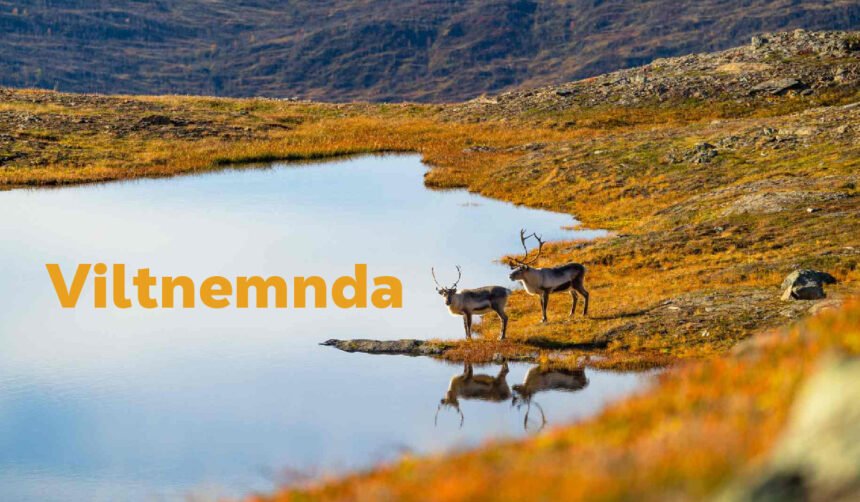In Norway, the word viltnemnda may sound technical, but it describes one of the most important local institutions for managing wildlife and keeping communities safe. Literally meaning “wildlife committee” (vilt = wildlife, nemnda = board or committee), viltnemnda is the municipal‑level body responsible for overseeing how wild animals are managed, how hunting is regulated, and how accidents or conflicts between people and animals are handled. Unlike voluntary clubs, this is a formal and legally mandated committee established under Norwegian law. Its work affects everyone who drives through moose country, owns farmland at the edge of forests, enjoys hunting traditions, or simply values biodiversity. This article explains in depth what viltnemnda is, how it operates, how citizens can interact with it, the challenges it faces, and the opportunities it has to adapt for the future.
What Is Viltnemnda? Definition, Legal Basis and Purpose
The term viltnemnda literally translates to “wildlife committee” and refers to an official board operating at the municipal level rather than the national level. Every municipality in Norway has the right, and often the obligation, to establish such a committee to implement national wildlife policies locally. The legal foundation for viltnemnda lies in Norway’s Jakt- og fangstloven (Wildlife Act of 1981) and Naturmangfoldloven (Nature Diversity Act of 2009), which together define the state’s ownership of wild game, the responsibilities of municipalities, and the requirement that decisions be based on scientific knowledge and precautionary principles. In other words, viltnemnda is not a club of interested volunteers; it is a statutory body charged with specific duties under the law.
The main mission of viltnemnda is broad but clear. It is responsible for managing wildlife populations at sustainable levels, regulating hunting and issuing local quotas, coordinating emergency responses to injured or road‑killed wildlife, mediating conflicts between humans and animals (such as crop damage or livestock predation), advising municipalities on conservation and habitat protection, and acting as the local bridge to higher‑level agencies like the Norwegian Environment Agency (Miljødirektoratet). These responsibilities make viltnemnda a critical link between national policy and local realities.
Structure and Governance of Viltnemnda
Each municipality tailors its viltnemnda to local conditions, but some common features exist. Typically, a viltnemnda has between three and seven members plus deputy members. They are appointed by the municipal council and are often drawn from stakeholder groups such as farmers, hunters, conservationists, or municipal staff with environmental expertise. This mix of backgrounds is intentional: it ensures that different perspectives—resource use, conservation, and public safety—are represented when decisions are made.
The viltnemnda usually reports to the municipality’s environmental or nature department and may act as an advisory body or, in some matters, a decision‑making body with legal authority. For example, its recommendations on hunting quotas or emergency culling often carry direct legal weight. In practice, the Viltnemnda collaborates closely with other actors: the police (especially for wildlife road accidents), landowners (for property conflicts), local hunters’ associations (for data and population control), and national agencies (to ensure consistency with broader conservation policy). This network of cooperation gives Viltnemnda a hybrid character—local in its knowledge and responsiveness, but tied to national frameworks.
Responsibilities of Viltnemnda in Practice
The day‑to‑day work of viltnemnda can be grouped into several functional areas. Each is vital for keeping the balance between human activity and wildlife.
A. Wildlife Accidents and Injured Game
One of the most visible roles of viltnemnda is coordinating responses to road accidents involving wild animals (skadet vilt / påkjørsel av vilt). When a driver hits a moose, roe deer, or other large animal, Norwegian law requires the incident to be reported to the police at 02800. The police then notify the viltnemnda or a dedicated wildlife search team. Trained personnel, often with tracking dogs, go to the site to locate the animal, assess its condition, and either provide humane euthanasia to prevent suffering or arrange for removal of the carcass. These incidents are also documented in collision registers, providing data for future mitigation measures like signage, vegetation clearing, or fencing near hotspots. This workflow protects both public safety and animal welfare.
B. Hunting Permits and Population Control
Hunting is a deeply rooted tradition in Norway, but without careful management it can either deplete wildlife populations or allow overpopulation that increases accidents and crop damage. Viltnemnda plays a key role in balancing these pressures. Landowners and hunting teams propose multi‑year herd plans (bestandsplaner) for species such as moose and deer. Viltnemnda reviews these plans against biological data—harvest statistics, recruitment rates, browse pressure—and municipal objectives. It then recommends annual hunting quotas and tag structures. Compliance is monitored closely: hunters must report harvest data, sometimes provide jaw samples for age analysis, and follow the conditions attached to permits. This evidence‑based loop keeps hunting sustainable.
C. Nuisance and Damage Control
Wild animals do not respect property boundaries, and conflicts with farmers or landowners are inevitable. Moose may browse on young forest plantations, beavers may flood roads with dams, or geese may graze on crops. Citizens can file complaints or compensation claims with viltnemnda, which investigates the damage and decides on appropriate measures. Norwegian law prioritizes non‑lethal interventions—fencing, scaring devices, flow devices in beaver dams—but viltnemnda can authorize skadefelling (damage felling) when the risk is significant or previous measures have failed. Such authorizations are time‑bound and location‑specific to minimize impact on overall populations.
D. Conservation Advice and Urban Planning
Another, less visible function of viltnemnda is advising municipalities on land‑use planning. New roads, housing developments, or industrial projects can fragment habitats and increase wildlife collisions. Viltnemnda can recommend wildlife corridors, warning signage, or route adjustments to reduce conflict. This role makes the committee not just a responder to problems but a proactive participant in long‑term conservation and infrastructure planning.
E. Public Education and Awareness
Finally, viltnemnda serves as a public information resource. It provides guidance on what to do after wildlife accidents, how to coexist with wild animals near homes or farms, and why certain hunting rules or quotas exist. Many committees hold public meetings or publish contact information for residents to report issues. By improving awareness of reporting duties and safety measures, viltnemnda increases compliance and community support.
Challenges Faced by Viltnemnda
Despite its importance, viltnemnda faces several recurring challenges that affect its ability to deliver consistent results.
Balancing Stakeholder Needs
One of the hardest tasks is balancing the interests of farmers, hunters, conservationists, and ordinary citizens. Farmers may demand aggressive action to protect crops, while conservationists urge minimal lethal measures. Hunters may want more generous quotas, while municipalities worry about road safety. This mix creates political pressure, especially in small communities where everyone knows each other.
Limited Resources
Many viltnemnder operate on tight budgets with limited staff or rely on volunteers. This can mean slower responses to accidents, less data collection, or reduced capacity for public outreach. Rural municipalities in particular may struggle to equip and train wildlife responders adequately.
Climate Change and New Species
Norway’s climate is changing, altering animal behavior, migration patterns, and food availability. Species expand into new areas or shift their seasonal movements, increasing unpredictability. Viltnemnda must adapt its strategies and quotas to keep up, which requires more data and flexible decision‑making.
Public Awareness and Reporting
Many citizens simply do not know that viltnemnda exists or that reporting wildlife collisions is a legal duty. Unreported accidents lead to animal suffering and lost data for management. Improving communication and signage remains an ongoing challenge.
Legal Overlaps and Organizational Change
In some municipalities, the formal viltnemnda has been dissolved and its tasks handed to other bodies such as ettersøkskorps (search corps). This can create confusion about who is responsible for what, especially during emergencies. Clear lines of authority are essential for effective action.
How Citizens Can Interact With Viltnemnda
For residents and visitors in Norway, knowing how to engage with viltnemnda is practical and often legally required. If you hit or find a wild animal on the road, call the police at 02800 immediately. Do not approach the animal yourself; instead, mark the location with a visible object so responders can find it quickly. Provide coordinates or road identifiers if possible, and stay available for follow‑up.
If your property is damaged by wildlife, gather evidence—photos, dates, estimates of loss—and submit a claim or permit request through your municipality, which will forward it to viltnemnda. You can also attend public meetings or consultations on hunting quotas, bestandsplaner, or wildlife policies to have your voice heard. In some municipalities, you can volunteer to help with data collection or even apply to become a member of the committee. Spreading awareness among neighbors about wildlife safety and reporting duties is another simple but valuable way to support viltnemnda’s work.
Future Trends and Innovations for Viltnemnda
Looking ahead, viltnemnda will need to evolve to meet new challenges. Technology offers powerful tools: drones and GPS collars can track animal movements more precisely, camera traps and citizen‑science apps can improve data collection, and digital reporting portals can streamline how citizens submit wildlife incidents. Regional cooperation between neighboring municipalities can help manage wide‑ranging species that do not respect administrative borders. Many observers also call for governance reforms—more diverse board representation, clearer rules, better public communication, and independent oversight—to strengthen legitimacy and transparency. By embracing these changes, viltnemnda can become even more effective at protecting wildlife and serving communities.
Comparison With Other Countries
Although viltnemnda is unique to Norway, the concept has analogs elsewhere. In the United States, for example, wildlife management is split between state agencies, county sheriffs, and private landowners, with some tribal co‑management. Norway’s model integrates these functions locally under a single municipal committee that handles hunting regulation, emergency response, conservation advice, and public interaction. This gives it a distinctive mix of legal authority, community participation, and ecological focus.
Quick Information Table
| Data Point | Detail |
|---|---|
| Legal Basis | Wildlife Act (1981), Nature Diversity Act (2009) |
| Role | Municipal wildlife board |
| Key Tasks | Wildlife accidents, hunting permits, population management, public advice |
| Core Partners | Police, landowners, hunters, national agencies |
| Most Active Months | September–November (hunting season, animal rutting) |
| Common Interventions | Moose/roe deer strikes, beaver dams, garden damage |
| Public Reporting Line | Call police at 02800 |
Conclusion
At its best, viltnemnda embodies Norway’s promise to protect biodiversity, support sustainable hunting traditions, and keep people safe where wild animals share human spaces. Its authority springs from national law, its legitimacy from transparent and data‑informed decisions, and its effectiveness from close coordination with police, hunters, landowners, and road authorities. Public participation is vital—by reporting accidents, attending meetings, filing claims, or simply spreading awareness, citizens help viltnemnda fulfill its role. As environmental pressures grow, these committees have the opportunity to use technology, expand cooperation, and become even more central to sustainable coexistence between humans and nature. Understanding and supporting viltnemnda is therefore not just a matter of policy; it is an investment in safer roads, healthier wildlife populations, and stronger communities.
FAQs About Viltnemnda
1. What is viltnemnda in Norway?
Viltnemnda is the local wildlife committee in Norwegian municipalities. It helps manage wild animals, controls hunting, responds to accidents with wildlife, and protects nature. It works under Norwegian law to keep a balance between people and wildlife.
2. Who do I call if I hit a wild animal in Norway?
If you hit a moose, deer, or other wild animal in Norway, call the police at 02800. They will contact the local viltnemnda or wildlife response team. Never try to handle the animal yourself. Just stay safe and mark the location if possible.
3. What does viltnemnda do with injured animals?
Viltnemnda sends trained people to find and help injured wild animals. If the animal is badly hurt, they make sure it is put down quickly and humanely to stop suffering. They also record the accident for future safety planning.
4. Can viltnemnda stop animals from damaging farms?
Yes, viltnemnda can help if wild animals damage crops or property. Farmers can report the problem, and the committee may offer solutions like fences or even give special permission to remove the animal if needed.
5. Is viltnemnda the same in all towns in Norway?
Each town or municipality has its own viltnemnda, so they can be a little different. But all follow the same national laws and do similar work: managing wildlife, helping with hunting rules, and responding to animal-related problems.
For More Information, Visit Dotmagazine









